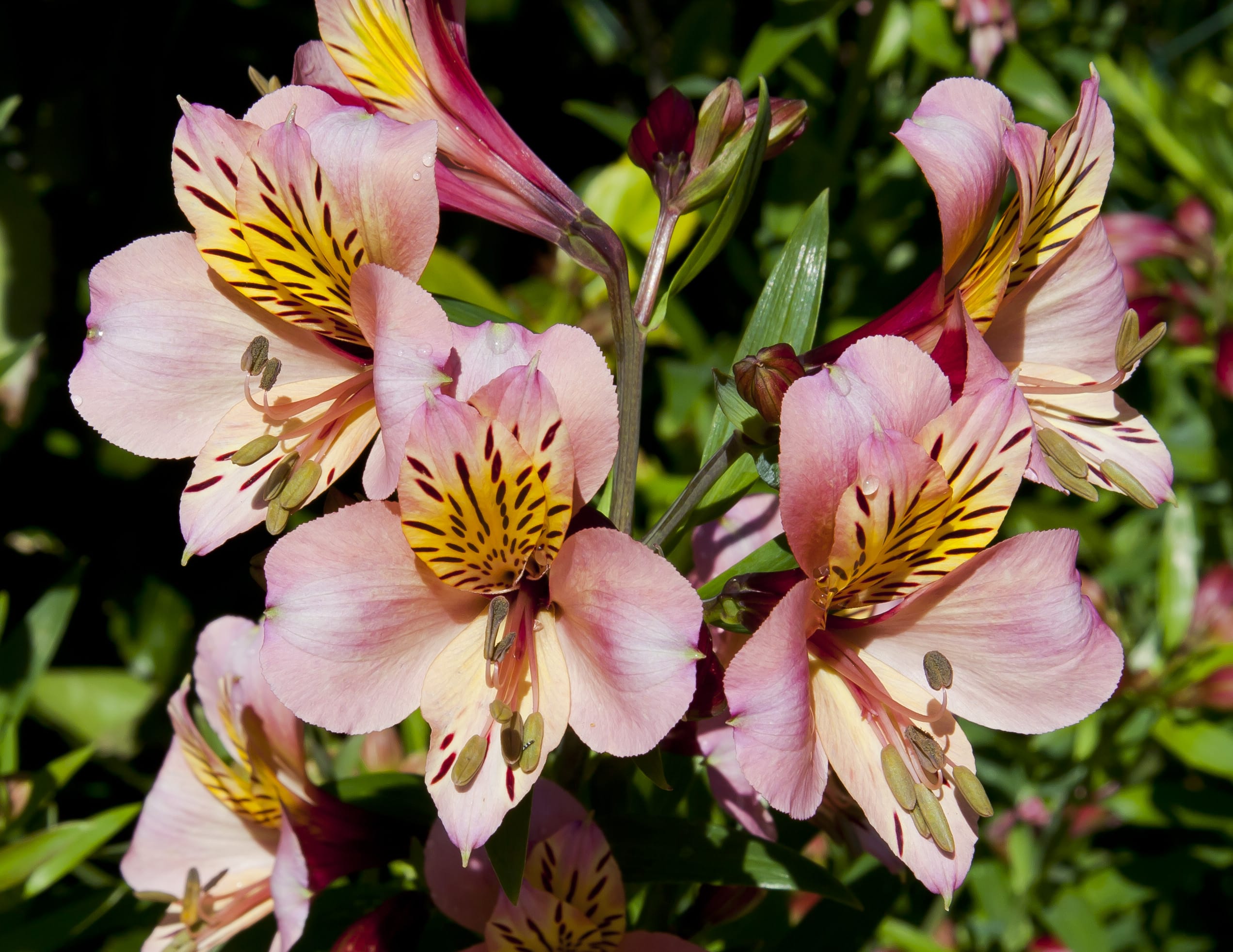
Image - Wikimedia / Diego Delso
La Alstroemeria aurantiaca It is one of the rhizomatous plants that produce flowers during the summer. In addition, it is capable of withstanding moderate frost without problems, something that is undoubtedly very, very interesting since it means that we can keep it outside throughout the year; we will only have to protect it if the winter temperatures are extreme.
As if that were not enough, we are talking about a species that is very grateful; In other words: it is quite easy to care for. But we will have to know when it is planted, what is the best time to fertilize it, and much more. So If you want to grow one in your patio or in the garden, take note of what I am going to tell you.
What is the origin and characteristics of the Alstroemeria aurantiaca?
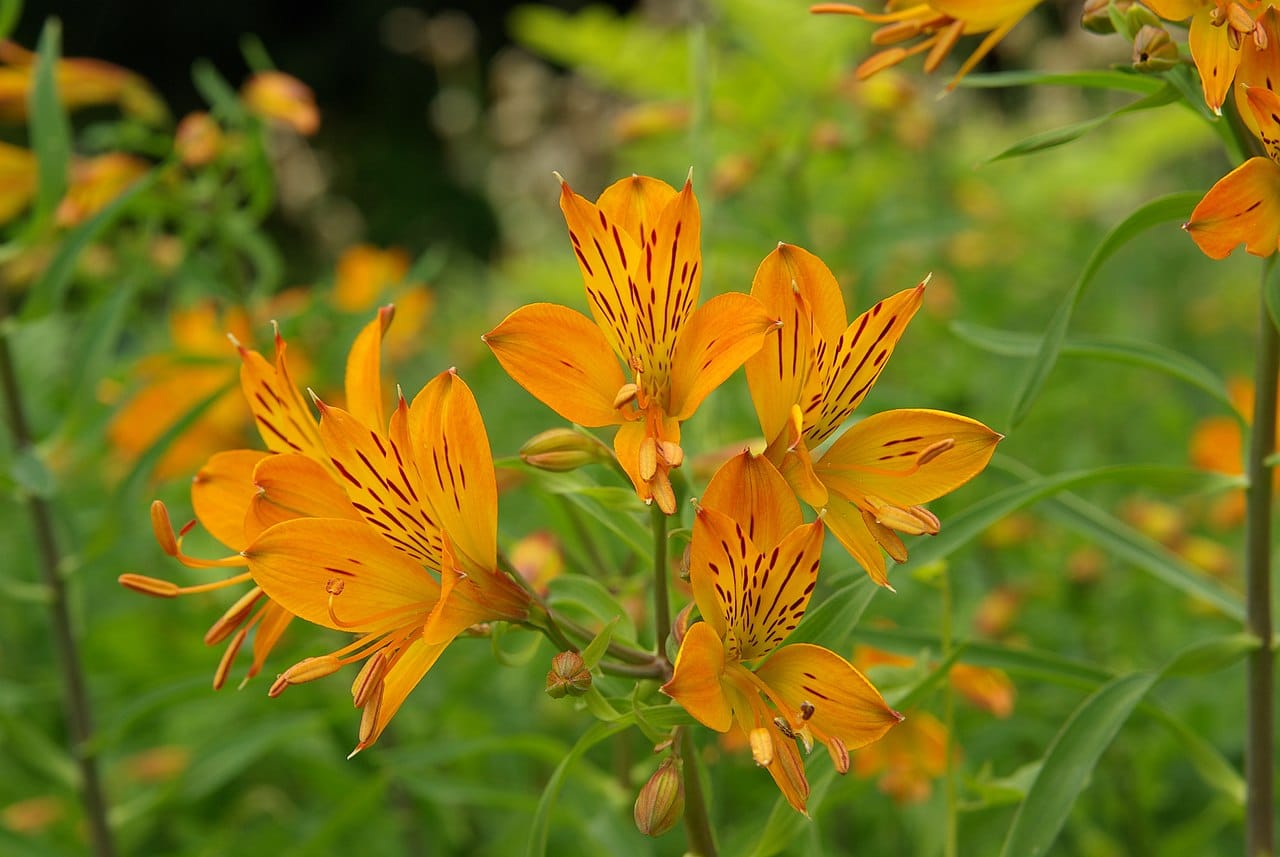
Image – Wikimedia/10mpx cg
Known as lily of Peru, Peruvian lily, golden amancay or simply alstromelia, is a rhizomatous plant that belongs to the genus Alstroemeria. It is one of the 120 species of this genus, like the Alstroemeria haemantha or the Alstroemeria psittacina. But before continuing, you should know that its current scientific name is alstroemeria aurea, so that of Alstroemeria aurantiaca has become a synonym for it.
But in any case, what have not changed are its characteristics. And it is that It is a rhizomatous plant that develops stems which can reach between 0,50 centimeters and one meter in height.. These stems are erect, so it will not be very difficult to choose the place where it is going to be placed.
The leaves are elongated and green. During the summer it produces flowers in groups, which can be orange or yellowish with reddish spots. As for the fruit, it is an ellipse-shaped capsule, which contains small seeds. As a curiosity, tell you that she is a hermaphrodite; that is, the flowers have female parts and male parts, so that a single specimen is capable of producing fruits with seeds.
What are the care of the Alstroemeria aurantiaca?

Image - Wikimedia / Magnus Manske
Now let's talk about the care that must be given to this precious plant. And it is that, as I like to repeat, when we acquire one, It is at least advisable to learn a little about it and its needs. In this way, we can have a good chance of being able to maintain it for a long, long time (years).
Where should the astromelia be placed?
Outside, inside the house; in the sun, in the shade... There may be many doubts about it. The Alstroemeria aurantiaca It is a plant that needs a lot of light, better if it is direct but it can also be indirect as long as it is in an area where there is light. For this reason, it is highly advisable to have it outside from the first moment, either exposed to direct sun or semi-shade.
Can it be grown indoors? If there is a room in your home with a window through which a lot of light enters from outside, yes. But if you have a window with a ledge or a balcony, it is preferable that you place your alstroemeria there.
In a pot or in the ground?
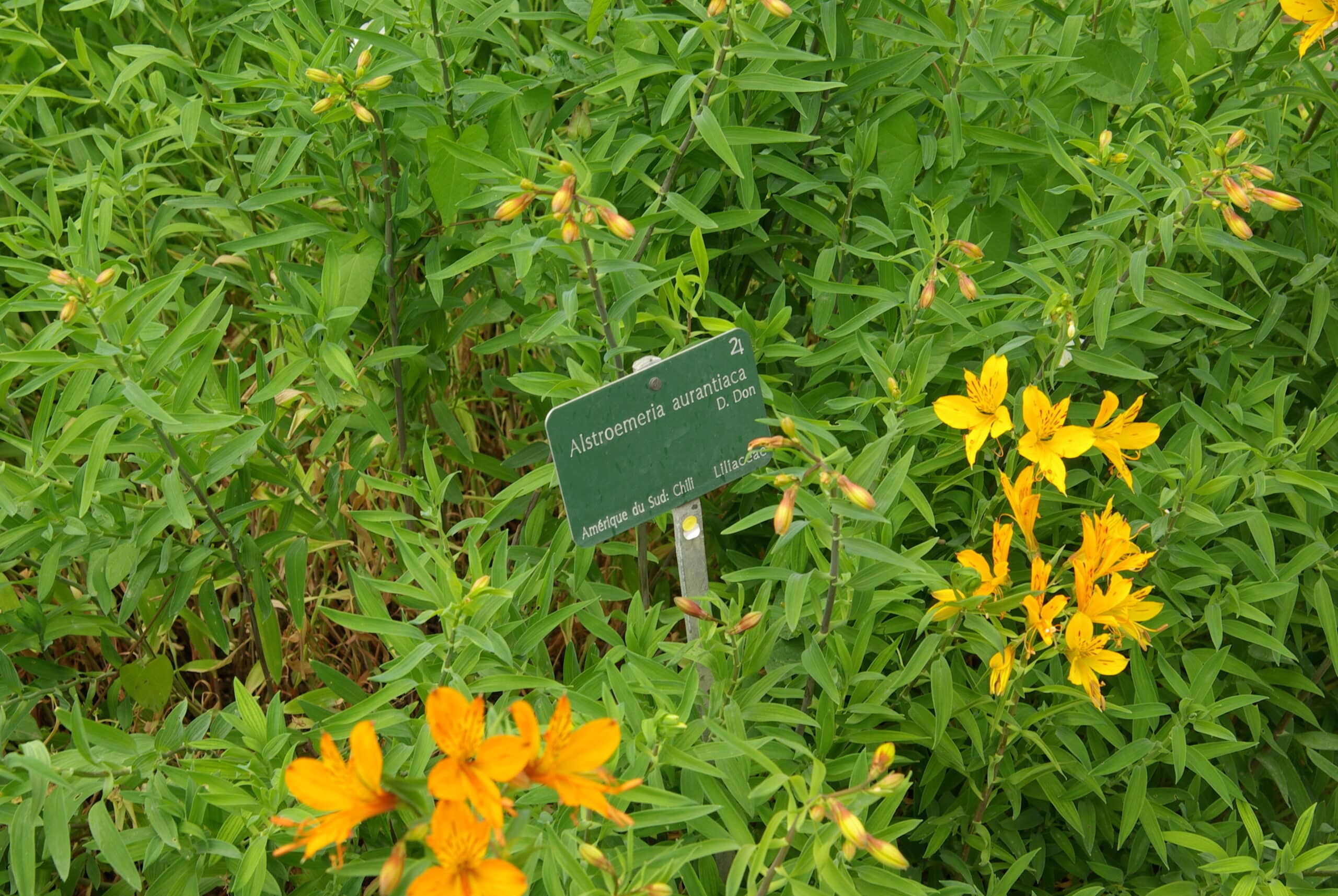
Image – Wikimedia/10mpx cg
This will depend above all on you and where you want to plant your Peruvian lily. I will only tell you that since the rhizome resists frost, it will not be necessary to have it in a pot if you do not want it. Also, if it is in the ground it will have a better chance of growing bigger and better.
Now, If you want to plant it in a pot, it is very important that it has drainage holes at its base. since otherwise the roots could drown as a result of that water that remains inside the container.
What soil or substrate do you need?
Regardless of whether you are going to plant it in your garden or in a pot, it is necessary that the land or substrate be light and fertileas this. As for its pH, you should not worry too much about this: it tolerates both clayey and acid soils (yes, its pH must be equal to or greater than 5).
For example, if you or your area have azaleas, Japanese maples, camellias, gardenias, or other acidic plants growing in the soil, it may be a good idea to plant a few. Alstroemeria auriantiaca in those areas where there is no shade.
When is it watered?
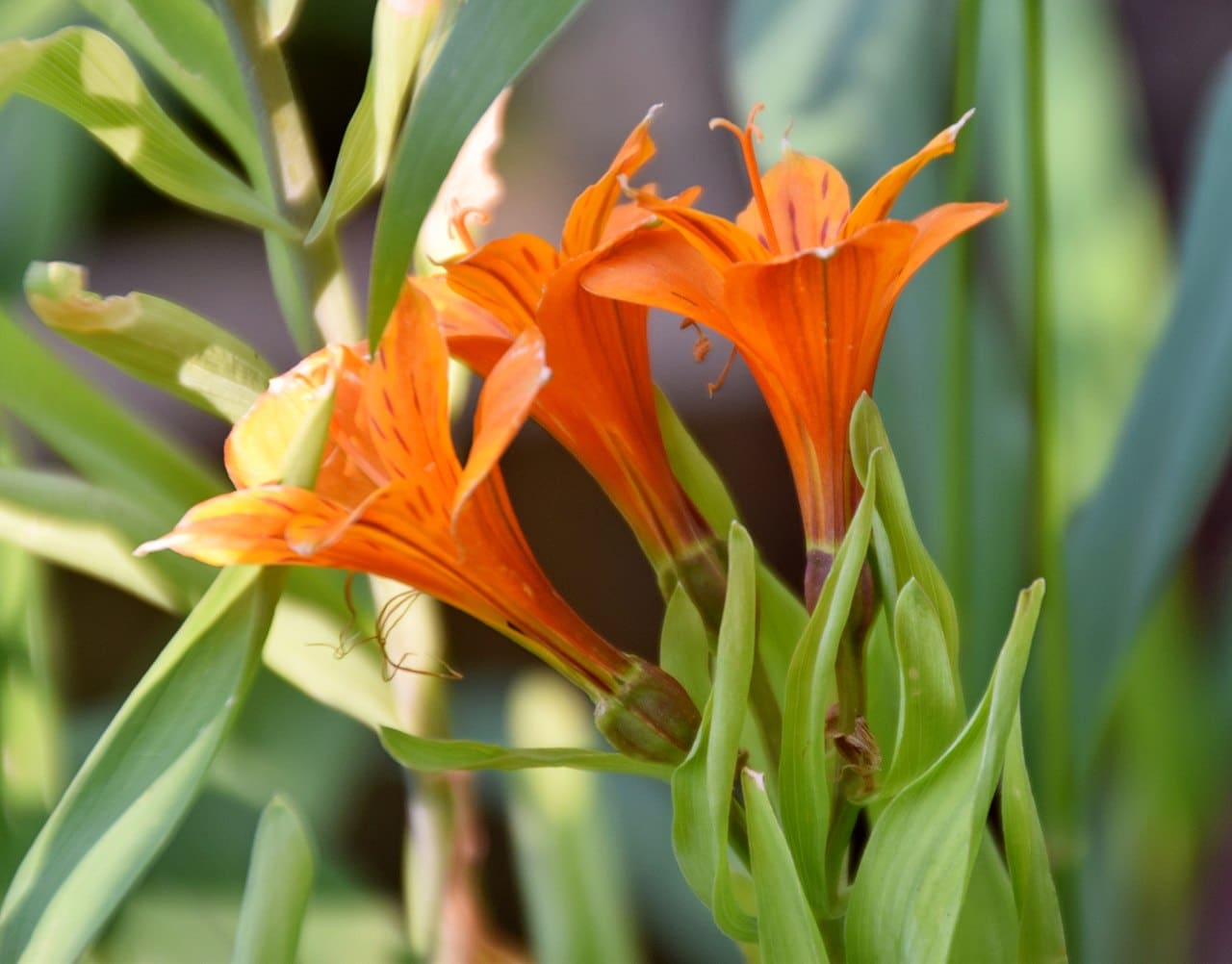
Image - Wikimedia / Krzysztof Golik
Alstroemeria watering should be moderate. If there is something that it does not tolerate, it is excess water in its roots, so it is important that it be watered from time to time. Generally, It will be done when the soil, or if the substrate is in a pot, is almost completely dry. But of course, how can you know that? Checking the humidity, of course.
And for this there is nothing like a wooden or plastic stick. This must be, as I say, thin, but also long, about 35-40 centimeters in length. Why? Why the innermost layers of the earth take longer to dry, and these are the ones that should matter to us to know when to water and when not, because that is where the roots are.
Therefore, if after inserting the stick we carefully remove it and see that it is wet, we will not have to water. But if, on the contrary, it is dry, then yes.
Another important thing about irrigation to know is that it must be irrigated with rainwater, or at least with one that is suitable for human consumption.
When is it paid?
It is a plant that remains active from spring to after blooming in autumn. For this reason, it is very interesting to fertilize it during all those months with a fertilizer for flowering plants such as this. But she remembers to follow the instructions, as an overdose could burn her roots.
What are the pests and diseases of the Alstroemeria aurantiaca?
Although it is generally quite durable, it can have some problems. Regarding pests, if the environment is very hot and dry, it is common for red spider mites, thrips and aphids to appear, which treat well with diatomaceous earth (for sale here). This is a natural product that is not toxic to humans at all, and also does not leave any residue. Here is a video in which I talk about him:
As far as diseases are concerned, when watering too much, or when the soil remains wet for a long time, fungi such as Rhizoctonia or the oomycetes Phytophthora and Pythium can appear. These infect the roots, and can cause the death of the plant. For this reason, it is important to avoid planting it in heavy soils and to water it excessively frequently. If we suspect that we have gone too far with irrigation, it is best to apply an antifungal product such as Aliette (for sale here) or another systemic fungicide such as this.
Can you have other problems?
Yes. In very alkaline soils, with a pH of 7 or higher, it is common for its leaves to have iron chlorosis. due to lack of iron. If your altroemeria suffers from it, you will see that the leaves turn yellow, leaving the veins green. To solve it, you will have to fertilize it with a fertilizer for green plants such as this or with one for acidic plants such as this.
How does it multiply?
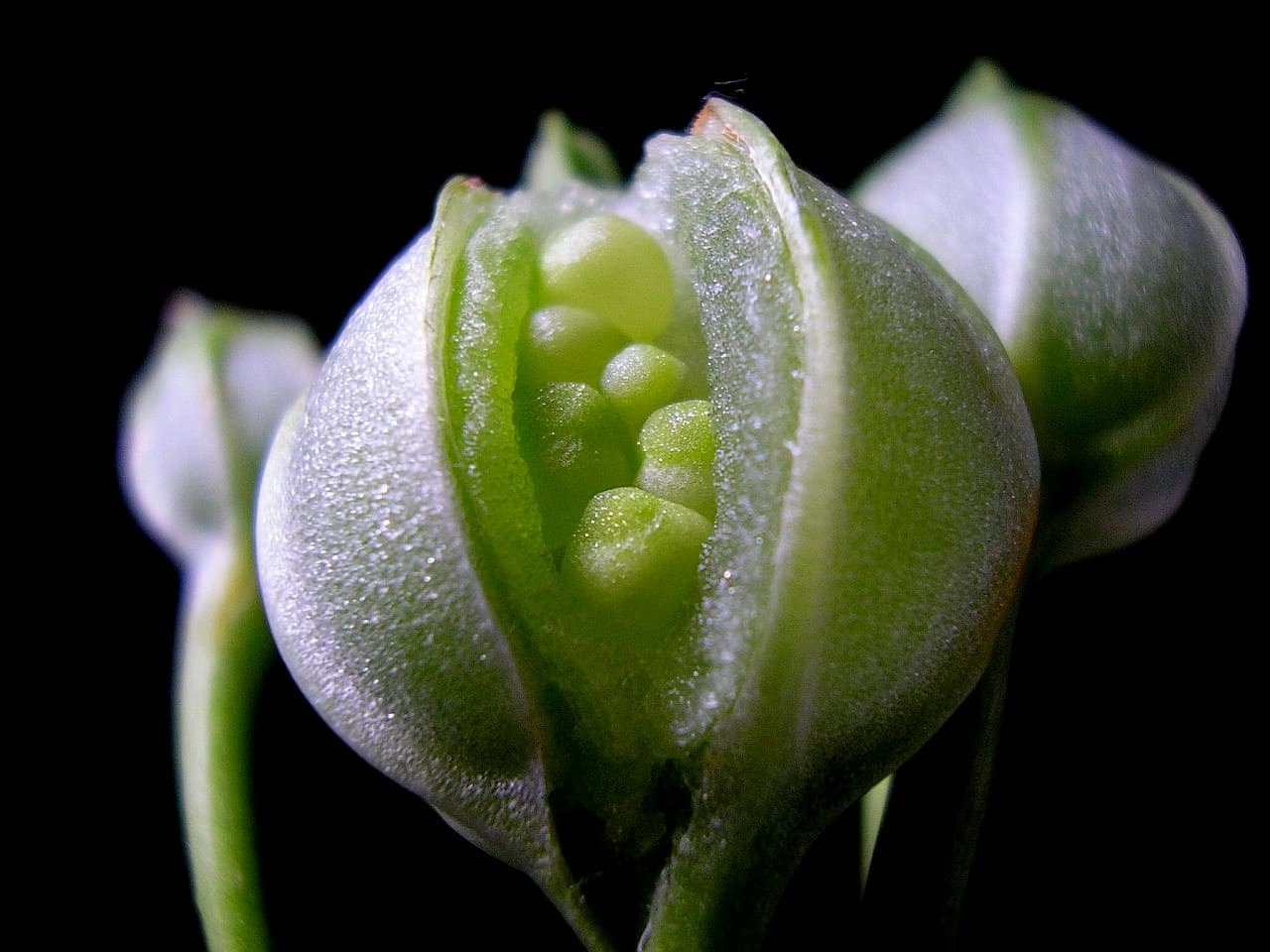
Image – Wikimedia/Flickr.com user “tanakawho”
La Alstroemeria aurantiaca multiplies by seeds, but also by rhizomes. The first ones are sown in spring, while the rhizomes are obtained in autumn, when the mother plant has stopped flowering and has already entered into rest. In both cases, it must be grown in a pot, with a substrate for seedbeds such as this or with coconut fiber (for sale here).
What is its resistance to cold?
The rhizome supports frosts up to -12ºC. But the plant grows better if the temperatures are kept somewhat high, above 10ºC.
For what do you use it?
The alstromelia plant is mainly used as cut flower. The flowers last several days, as long as they are placed in vases with clean water and aspirin. Now, it is also splendid as ornamental plant, being able to have it in pots or in the garden.
Where to buy astromelia bulbs?
These plants begin to be commercialized during the spring in garden stores and in nurseries. It is also possible to find it in some supermarkets, such as Aldi or Lidl. Now, if you wish, you can buy seeds from here.